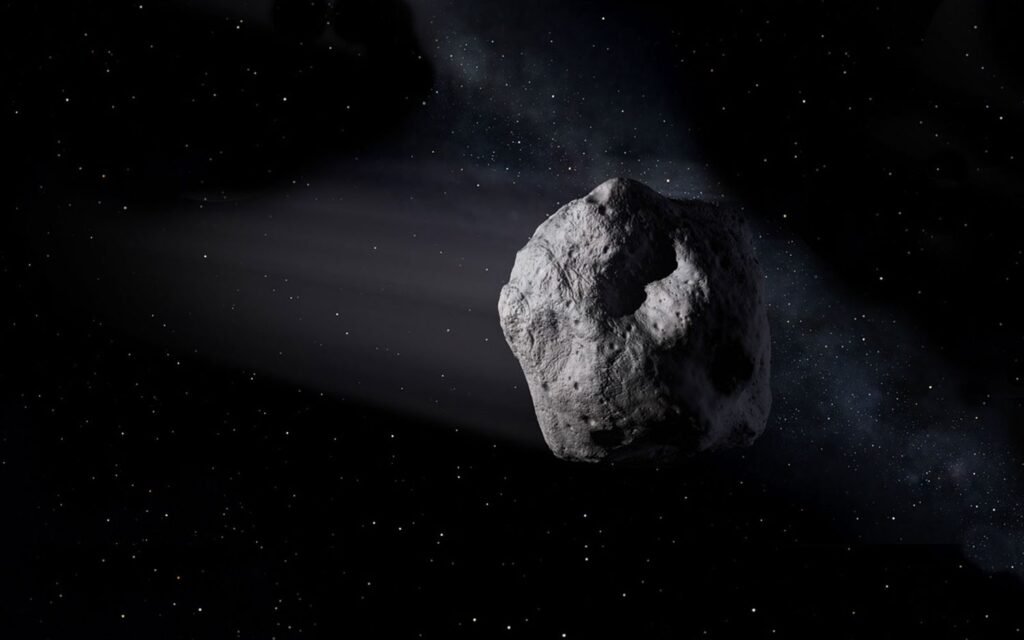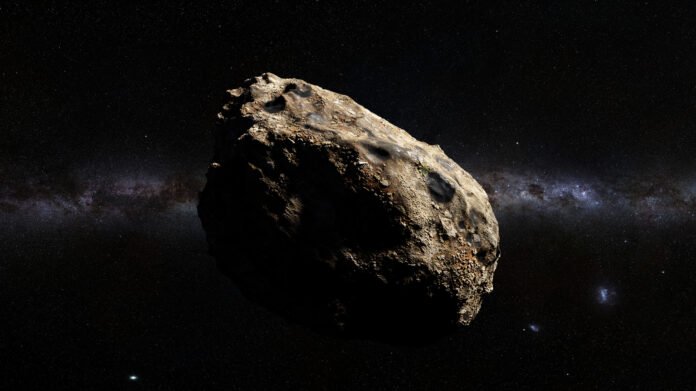In an astronomical spectacle, an asteroid of colossal proportions, comparable in size to the Empire State Building, is set to make a close encounter with Earth today. Astronomers and space enthusiasts around the world are eagerly anticipating this celestial event, which offers a rare glimpse into the cosmic wonders that surround our planet.
The asteroid, known as 2022 KT1, is part of a group of celestial bodies classified as Near-Earth Objects (NEOs). These asteroids, with orbits that bring them in proximity to Earth, are closely monitored by astronomers to understand their trajectories and potential impact risks. The upcoming passage of 2022 KT1 presents a unique opportunity for scientists to observe and study an asteroid of substantial size as it traverses relatively close to our planet.
Measuring approximately 1,080 feet (330 meters) in diameter, 2022 KT1 is comparable in size to the iconic Empire State Building in New York City. Despite its massive dimensions, there is no cause for alarm, as the asteroid is expected to pass by Earth at a safe distance. The close approach, while captivating for sky gazers, poses no threat of collision with our planet.
NASA’s Near-Earth Object Observations (NEOO) program, along with various observatories worldwide, actively tracks and monitors the trajectories of such celestial bodies. This collaborative effort ensures that astronomers can accurately predict the paths of asteroids like 2022 KT1, providing valuable data for assessing potential impact risks and safeguarding Earth.
The passage of large asteroids near Earth is not uncommon, and scientists consider such events as opportunities to enhance our understanding of these celestial objects. The data collected during these encounters aids in refining models and predictions for future asteroid movements, contributing to our ability to assess and mitigate potential risks associated with NEOs.

As 2022 KT1 makes its close approach, astronomers will utilize various instruments, including ground-based telescopes and radar systems, to gather detailed observations. These observations can unveil crucial information about the asteroid’s composition, rotation, and other characteristics, offering insights into the broader composition of our solar system.
The study of asteroids is not only scientifically significant but also holds potential for future space exploration endeavors. Some scientists envision asteroids as valuable resources for mining, with the potential to extract rare minerals and elements. By studying these celestial bodies up close, researchers can assess their composition and viability for future exploration and utilization.
While 2022 KT1 is not on a collision course with Earth, its passage serves as a reminder of the importance of continued vigilance in monitoring Near-Earth Objects. Organizations like NASA, alongside the global astronomical community, play a pivotal role in advancing our understanding of these celestial wanderers and ensuring the safety of our planet from potential cosmic hazards.

Beyond the scientific significance, the close passage of 2022 KT1 underscores the ongoing efforts to develop technologies capable of deflecting or mitigating potential asteroid threats. While this particular asteroid poses no danger, the research conducted during such encounters contributes to the advancement of planetary defense strategies. Collaborative initiatives, including international partnerships and the continuous refinement of observational techniques, play a crucial role in fortifying our defenses against potential celestial hazards.
The fascination with asteroids extends beyond the realm of scientific inquiry. Their mystique has inspired imaginations, sparking interest in space exploration and the potential for future asteroid missions. The knowledge gained from studying these celestial bodies not only enhances our understanding of the solar system’s formation but also lays the groundwork for ambitious space missions aimed at further unraveling the mysteries of the cosmos.
As 2022 KT1 charts its course through our celestial neighborhood, astronomers and space enthusiasts eagerly await the opportunity to witness this cosmic spectacle. Public observatories, both physical and virtual, are expected to offer unique viewing experiences, allowing individuals worldwide to marvel at the vastness of the universe and the intricate dance of celestial bodies.
In the grand tapestry of space, encounters with asteroids like 2022 KT1 serve as reminders of the dynamic and interconnected nature of our solar system. While the asteroid’s trajectory ensures a safe pass by Earth, the event contributes to our collective knowledge and reinforces the importance of ongoing scientific endeavors to monitor and comprehend the celestial phenomena that shape our cosmic surroundings.

